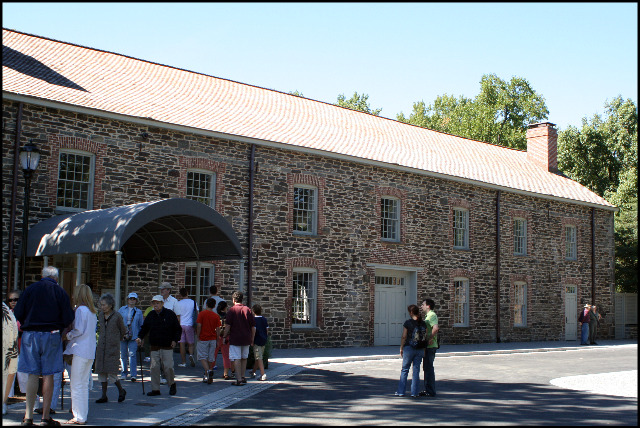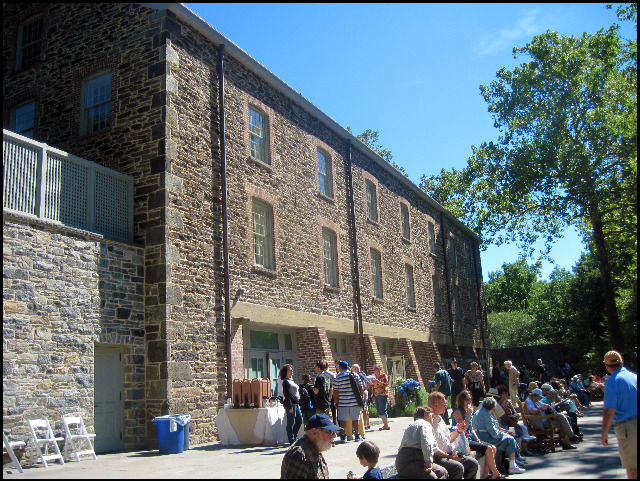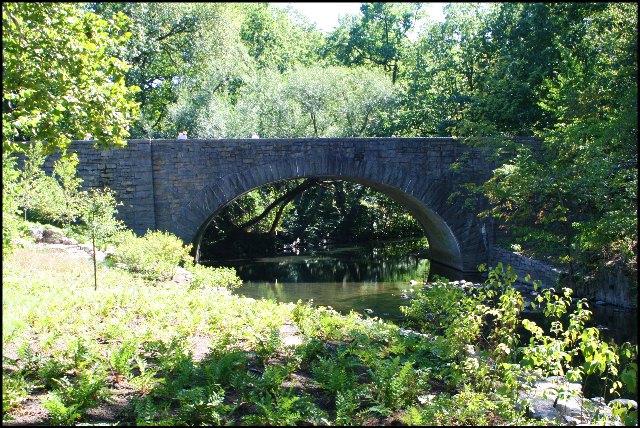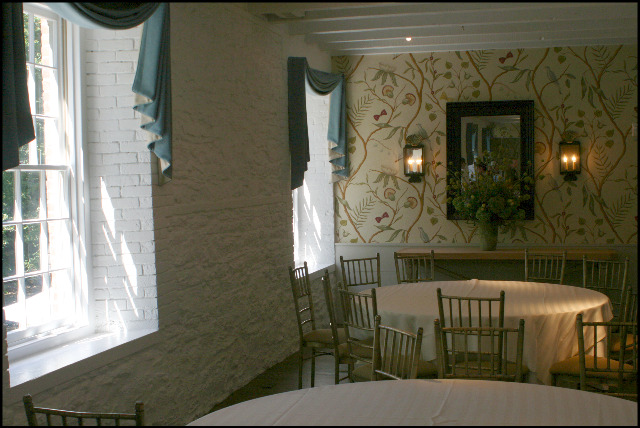Lillian and Amy Goldman Stone Mill

The entrance to the Stone Mill. The building's schist fieldstone facade was recently cleaned, and the asphalt roof was replaced with cedar shingles.
Over the weekend I visited the newly dedicated Lillian and Amy Goldman Stone Mill at the New York Botanical Garden (NYBG) in the Bronx, New York. I remember the site distinctly, from my childhood, when it was known as the Old Snuff Mill. Whenever I had a school fieldtrip, the class always had lunch there on the stone terrace, when it was in use as NYBG’s café.

Saturday's Stone Mill open house attracted many people to the stone terrace by the Bronx River.
The Stone Mill was a tobacco factory, built in 1840 by the Lorillard family on their massive estate, which today is part of the NYBG. Interestingly, one of the family members, Pierre Lorillard IV with William Waldorf Astor, also developed Tuxedo Park, New York. It was built as an exclusive Blue Blood society resort community in Orange County with Gilded Age mansions designed by well-known architects including Bruce Price, Carrere and Hastings, McKim, Mead and White, and Warren and Wetmore.
According to Andrew Dolkart in the book, Guide to New York City Landmarks, this is “one of the rare surviving examples of early industrial architecture in the city, this fieldstone and brick mill, used the water power of the Bronx River to grind tobacco into snuff.” It was used until 1870, when the company moved to Jersey City, New Jersey. New York City bought the 661 acres estate in 1884, and the NYBG was granted 140 acres in 1915. The building was designated a New York City Landmark in 1966, and a National Landmark in 1976.
The 170-year-old building recently underwent an $11 million restoration, and was open to the public on Saturday and Sunday. The New York Landmarks Conservancy gave tours of the newly refurbished building. There was live music, refreshments, and specialized tram and walking tours to highlight some other Lorillard properties that remain in use, including two other 19th century buildings within a 100-acre district, along the Bronx River.

New hillside plantings adjacent to the stone bridge over the Bronx River.
The Stone Mill's restoration maintains the mid-19th-century industrial character on the exterior while, in the three-floor interior, equips it with modern building systems creating a LEED (Leadership in Energy and Environmental Design)-certified structure that meets the Silver standard. Integral to the project, an intricate landscape design and restoration plan for the adjacent hillside involves treating storm water runoff into the Bronx River and utilizes native species in the extensive plantings.

One of the rooms that will be used for special events. Extensive research and some trial-and-error produced a 12-over-12 double-hung window—interior trim of poplar, sashes of Western pine, and exterior trim of Spanish cedar—handcrafted using custom-made knives and following a template made for each window opening. The paint color for the trim was chosen to match a color typical of the mid-19th-century industrial buildings. [NYBG]
Since 2007, the site has primarily been used for weddings and other social gatherings. It also has office space for the horticulture curatorial staff. The Stone Mill will have another open house and tours on September 18 and 19. The building is not normally open to the visiting public. For more information visit: New York Botanical Garden.
 Deena Parham
Deena Parham
Reader Comments